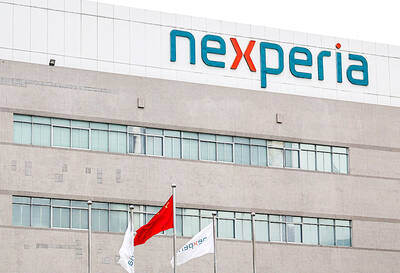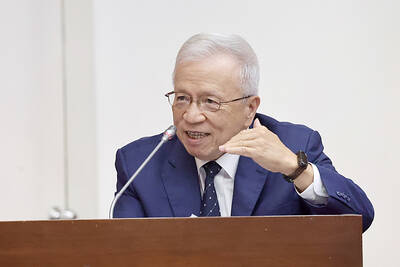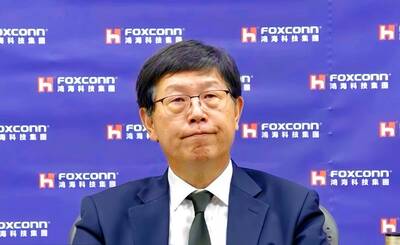The dollar traded mainly higher on Friday as better-than-expected US data helped shift expectations on healthy growth going forward in the world's biggest economy.
However, the greenback lost ground against the New Taiwan dollar on the Taipei Foreign Exchange on Friday, decreasing NT$0.01 to close at NT$33.009.
A total of US$1.4 billion changed hands during the day's trading.
The US currency opened higher at NT$32.917, and fluctuated between NT$32.917 and NT$33.107.
The euro slipped to US$1.3442 at 9pm GMT from US$1.3454 in New York late on Thursday, after earlier in the day slipping below the US$1.34 mark for the first time in almost two months.
The US dollar rose to ?122.09 -- hitting its highest level since late January -- from ?121.71 on Thursday.
The US currency picked up momentum after data showed the US economy added a net 157,000 jobs last month, better than expected. Analysts said the report suggests the economy is coming out of its first-quarter soft patch but that inflation remains only moderate.
The payrolls are a key event for the market, which is anxious for fresh clues on the outlook for US interest rates.
The Federal Reserve has been on hold for nearly a year with base US rates at 5.25 percent. In recent months, market participants have shifted away from a perception that the Fed will need to cut rates to stimulate flagging growth.
Stephen Gallagher, economist at Societe Generale, said he has now thrown in the towel on his forecast for a Fed rate cut this year, and now sees the next move by the US central bank as a rate hike.
"More and more we are convinced the mid-cycle slowdown has ended and the economy is currently firming to trend," Gallagher said. "Against a backdrop of stubborn inflation and tight labor markets, our analysis going forward will be more focused on the timing of rate hikes, not cuts."
Meanwhile, the closely watched US ISM survey on manufacturing activity came in above forecasts, rising to 55.0 last month from 54.7 in April to reach its highest level for 12 months.
Analysts said the good news on the US economy was enough to offset evidence of moderating inflation, with the annual core PCE indicator -- the Federal Reserve's preferred measure of inflation -- dropping to a 13-month low of 2 percent, according to a US Commerce Department report.
The report also showed US consumer income down 0.1 percent in April, while spending rose 0.5 percent.
While the data as a whole shored up the dollar, there was some skepticism about the perceived improvement in the figures.
"The strength in May payrolls has largely emerged from services jobs, the durability of which remains doubtful," Ashraf Laidi at CMC Markets said.
Against this backdrop, the outlook for US interest rates is still cloudy, he noted.
Michael Woolfolk at Bank of New York said the easing inflation indicators suggest the Fed will be in no hurry to hike rates, and this limited the dollar's rally. But he said the greenback is keeping upward momentum.
"The real surprise in this morning's price action was not the relatively modest reaction to nonfarm payrolls and personal income and spending, but rather the positive dollar tone," he said.
"A ubiquitous sense of economic recovery pervades the market right now, which is unequivocally positive for the dollar. ... While players are having difficulty breaking below the 1.3400 level in the euro-dollar, further signs of the US economic rebound should make this a fait accompli by next week," Woolfolk said.
Next week's market focus is on Thursday's meeting of the European Central Bank in which the bank is seen as almost certain to raise its key interest rates to a five-and-a-half-year high to curb inflation in the 13-nation eurozone economy.
In late New York trading, the US dollar stood at 1.2209 Swiss francs from SF1.2250 on Thursday.
The pound was being traded at US$1.9819 after US$1.98.

JITTERS: Nexperia has a 20 percent market share for chips powering simpler features such as window controls, and changing supply chains could take years European carmakers are looking into ways to scratch components made with parts from China, spooked by deepening geopolitical spats playing out through chipmaker Nexperia BV and Beijing’s export controls on rare earths. To protect operations from trade ructions, several automakers are pushing major suppliers to find permanent alternatives to Chinese semiconductors, people familiar with the matter said. The industry is considering broader changes to its supply chain to adapt to shifting geopolitics, Europe’s main suppliers lobby CLEPA head Matthias Zink said. “We had some indications already — questions like: ‘How can you supply me without this dependency on China?’” Zink, who also

At least US$50 million for the freedom of an Emirati sheikh: That is the king’s ransom paid two weeks ago to militants linked to al-Qaeda who are pushing to topple the Malian government and impose Islamic law. Alongside a crippling fuel blockade, the Group for the Support of Islam and Muslims (JNIM) has made kidnapping wealthy foreigners for a ransom a pillar of its strategy of “economic jihad.” Its goal: Oust the junta, which has struggled to contain Mali’s decade-long insurgency since taking power following back-to-back coups in 2020 and 2021, by scaring away investors and paralyzing the west African country’s economy.

BUST FEARS: While a KMT legislator asked if an AI bubble could affect Taiwan, the DGBAS minister said the sector appears on track to continue growing The local property market has cooled down moderately following a series of credit control measures designed to contain speculation, the central bank said yesterday, while remaining tight-lipped about potential rule relaxations. Lawmakers in a meeting of the legislature’s Finance Committee voiced concerns to central bank officials that the credit control measures have adversely affected the government’s tax income and small and medium-sized property developers, with limited positive effects. Housing prices have been climbing since 2016, even when the central bank imposed its first set of control measures in 2020, Chinese Nationalist Party (KMT) Legislator Lo Ting-wei (羅廷瑋) said. “Since the second half of

AI BOOST: Next year, the cloud and networking product business is expected to remain a key revenue pillar for the company, Hon Hai chairman Young Liu said Manufacturing giant Hon Hai Precision Industry Co (鴻海精密) yesterday posted its best third-quarter profit in the company’s history, backed by strong demand for artificial intelligence (AI) servers. Net profit expanded 17 percent annually to NT$57.67 billion (US$1.86 billion) from NT$44.36 billion, the company said. On a quarterly basis, net profit soared 30 percent from NT$44.36 billion, it said. Hon Hai, which is Apple Inc’s primary iPhone assembler and makes servers powered by Nvidia Corp’s AI accelerators, said earnings per share expanded to NT$4.15 from NT$3.55 a year earlier and NT$3.19 in the second quarter. Gross margin improved to 6.35 percent,